Disclosure: We may earn money or products from the companies mentioned in this post.
Some pet rabbit owners prefer adoption rather than buying rabbits from breeders or other places. However, adoption requires lots of work and decision-making separate from bunny ownership itself. This article is all about Rabbit Adoption Tips and Tricks and this article is going to take the stress of adopting a bunny.
Rabbits are incredibly popular pets in the United States. They are well-loved because of their laid-back demeanor and sweet-tempered dispositions.
In researching this article, I have asked thousands of rabbit friends and family who have adored rabbits for years to share their tips for adopting a rabbit. I’ve also included a list of rabbit rescue organizations that focus on finding abandoned bunnies a new home through adoption.
Adopt A Rabbit Instead Of Buying A Rabbit
There is a popular saying among the devotes to pet adoption that says, “adopt, don’t shop” which speaks to the valuing saving an abandoned pet instead of buying a ‘new’ pet. We’ll dig into that in more detail soon, but first, let’s explore how big of a problem rabbit abandonment is.
It’s been reported that rabbits are the third most abandoned pet in the United States. There has been increasing concern for the number of rabbits that are abandoned in the US that some states already have implemented policies that ban people from buying pet bunnies during Easter.
Sadly, during the Easter Season, people become enchanted with the Easter Rabbit and his rabbit eggs. That enchantment leads to impulse buys of cute bunnies and then a surge in abandoned rabbits one to three months later. Most of those abandoned Easter Bunnies end up at an animal rescue or, even worse, left to live as wild rabbits where they will likely die…domestic rabbits cannot live in the wild.
It is a sad situation.
Therefore, adopting a bunny often means saving a bunny’s life. Adoption is one of the most selfless acts one can do. Adoption is essentially a person opening their home and heart to a creature that needs a second chance despite the trauma and neglect that animal might have experienced.
However, adopting a pet rabbit does come with its own set of challenges, but in the rest of this article, we’re going to help you identify those challenges before you commit to inviting this animal into your home and life.
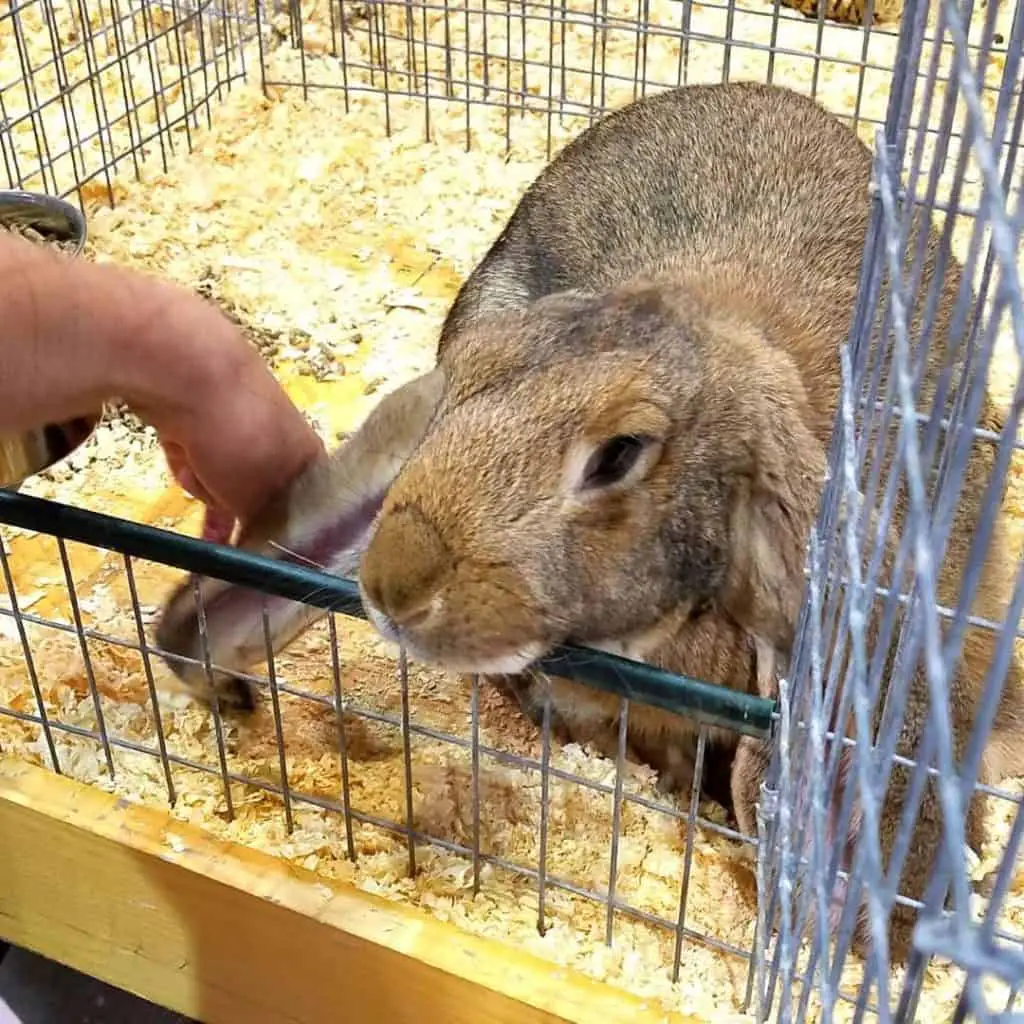
Where To Adopt A Rabbit
You can adopt a rabbit either directly from the individual who is giving up the rabbit or from an animal rescue (animal shelter) that took the rabbit in when it was giving up by its previous owner. There are advantages and disadvantages to both adoption options.
Keep in mind that I’m assuming the same quality of rabbit from both individuals and rescue organizations. I think this makes sense because if you don’t adopt the bunny from the individual, that same bunny will probably eventually end up in an animal shelter.
Pros And Cons Of Adopting From An Individual
| Advantages | Disadvantages |
|---|---|
| Usually much less expensive than rescue org | Rabbit won’t have a veterinarian exam |
| Get rabbit gear cheap or even free | Potential sadness and drama from the owner |
| You get to talk to the previous owner | You might be misled about the bunny |
| You might learn more about the bunny | Might need spaying or neutering |
| Fewer hoops to jump through | Harder to find a rabbit ready to be rehomed |
Pros And Cons Of Adopting From A Rescue Organization
| Advantages | Disadvantages |
|---|---|
| Bunny is usually already examined by a vet | Can be very expensive |
| You get a better understanding of health | Often has very specific rules |
| Bunnies are almost always spayed or neutered | Might take a while to get your bunny |
| No drama with the previous owner | |
| Experts help you be a great rabbit owner | |
| Easier to find a rabbit ready to be rehomed |
Adopt A Rabbit From Individual VS A Rabbit Rescue Organization
To decide if it’s better to adopt a bunny from an individual or a rabbit rescue organization you have to decide if your priority is to save money or have experts help you be the best rabbit owner possible. Adopting from an individual is generally much cheaper, but rabbit rescues will better educate you.
I encourage you to check with your local animal shelters to see if they have or sometimes have rescue rabbits. If they do, then ask them how much the adoption fee is and what screening is required. Armed with that information, you’ll be able to better decide where the best place is for you to adopt a pet bunny.
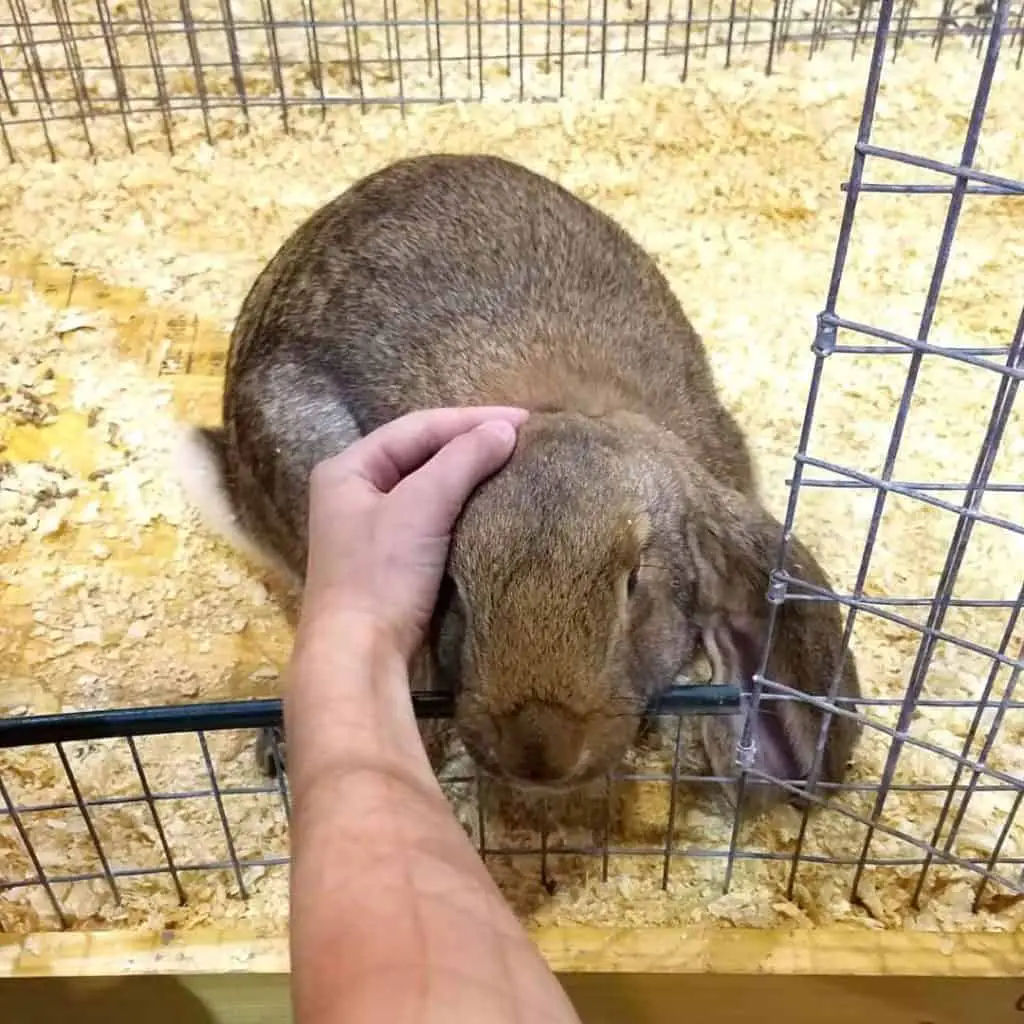
How To Adopt A Rabbit From A Rescue Organization
If you have experience in adopting other pets such as dogs and cats then the process is essentially the same. If you are a newbie, however, then it is a must to know that adoption follows certain steps and procedures.
It takes more time and effort than just going to a rabbit rescue/shelter, choosing the rabbit that best appeals to you, and then going home with your new best friend in tow.
It is also very important to note that different organizations may have different procedures and fees on adoption. Therefore you must do some research to better equip yourself for this task of adopting a bunny from a rabbit rescue.
Animal shelters and rabbit rescues often have adoption events designed to get people interested in adopting pets in need and to familiarize potential pet owners with their adoption process and rules. Attending one of these events is the easiest way to do your research into adoption in your area.
Alternatively, you can visit the organization, call them, or drop them an email to get your questions answered.
Do All Animal Shelters Have Rabbits?
Not all animal shelters accept rabbits. Many animal shelters simply don’t have the resources needed to properly care for rabbits. You just need to call your local animal shelter and ask if they have any rabbits available for adoption? If they don’t take rabbits, they’ll let you know and help you find a bunny.
Honestly, most animal shelters don’t take rabbits, but they are still worth calling. If there is an organization in your area that is a rabbit rescue, your local animal shelter is going to be able to put you in touch with those bunny-loving folks.
And even if there isn’t a real rabbit rescue in your area, the animal shelter will probably be happy to take your contact information in case someone who must give up their pet rabbit contacts them. Even if they don’t have the resources to take care of rabbits, they are still good animal-loving people who are going to want to help rehome a bunny so they don’t end up abandoned in the wild.
Questions To Ask Before Adopting A Rabbit From An Animal Rescue
Below are the essential questions that you need to be answered before deciding to adopt a bunny from any specific rescue organization. These questions are presented in the approximate order that you should ask them, as negative answers to some of the early questions will probably bring your visit to an end.
- Do you have any rabbits for adoption?
- If not, do you sometimes have rabbits for adoption?
- If you don’t accept rescue rabbits, can you take my contact information incase someone is looking to rehome a bunny?
- What is the adoption fee?
- Are all rabbits spayed or neutered, and if yes is that included in the adoption fee?
- What is the screening process before adoption?
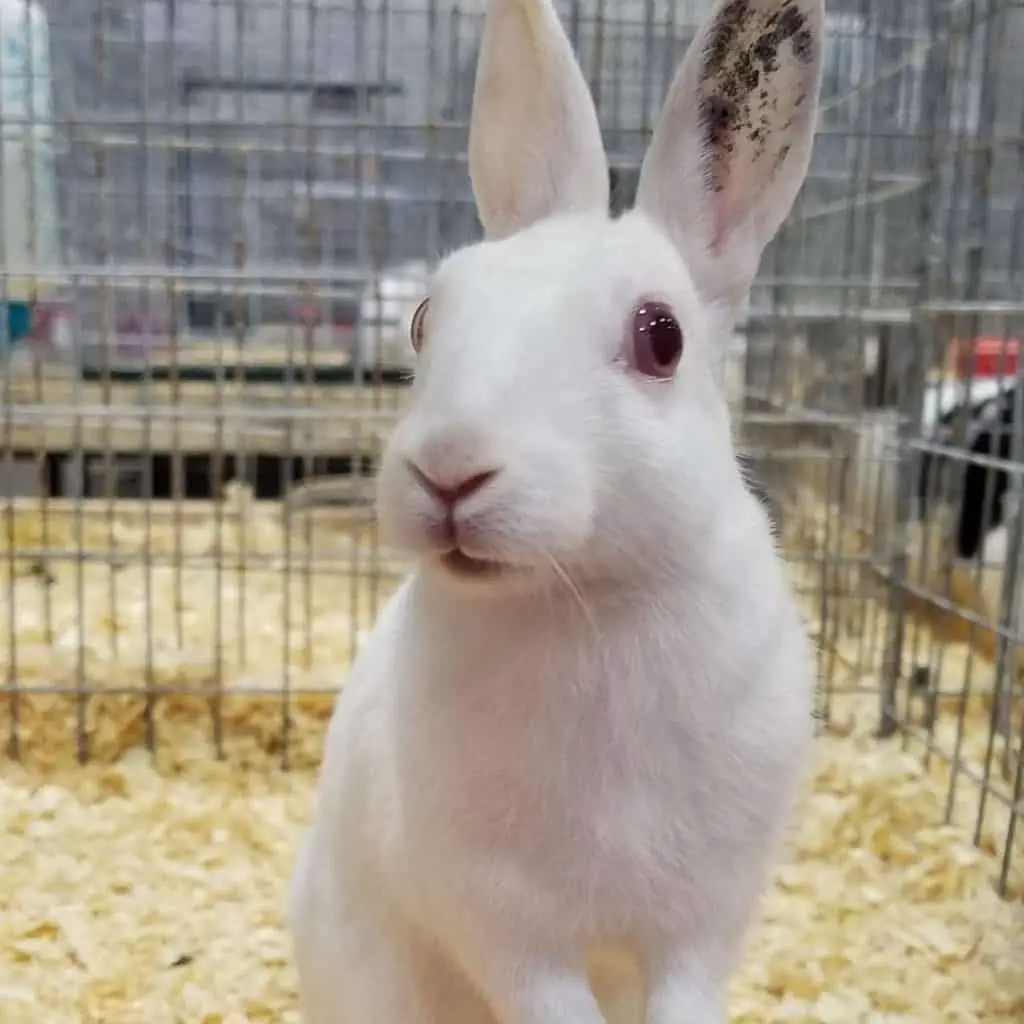
Steps To Adopting A Rabbit From An Animal Shelter
Below are the most common steps in the process of adopting a rabbit from an animal rescue organization. These steps might seem like overkill, but keep in mind that these non-profits are run by people who love animals and are looking for a forever home for these abandoned bunnies.
1. Required Questioniers
This is probably one of the most tedious parts of the process. This is akin to that of an interview. Owners are usually asked numerous questions to check that they are mentally, emotionally, and financially able and ready to take care of a pet rabbit.
Understand that rescues are especially meticulous when it comes to screening possible rabbit owners because the animals they have sheltered often have special needs or have been abandoned multiple times before. They striving to make sure that find the best fit for these in-need bunnies.
Common Rabbit Adoption Questionier Questions
- Why do you want to adopt this particular pet?
- How many people live in your household?
- What is your household income?
- Do you rent or own your home? If you rent, are pets allowed?
- Do you have children? If yest, how many and how old are they?
- Do you have other pets? Are they the same species as the to be adopted animal? How many other pets do you own?
- What is your work and travel schedule?
- Do you have pet setters available? If yes, who?
- How knowledgeable are you on the needs of the animal that you will be adopting?
- Have any pets died in your home for the past 12 months?
- Name, address, and phone number of your veterinarian?
- Where would your new pet be housed?
- What have you done to prepare for the arrival of your pet?
This is not exhaustive nor is it a definitive list of questions that you will be asked but considering this list will prepare you for the detail and breadth of a pet adoption questioner.
Some animal rescues even require a personal interview where these questions will be asked in person. Other rescues also require that you attach a photo of the home setup for your potential pet to the questioner.
You must be as honest as possible when answering these questions. This form is not only a tool to judge your ability to care for a pet rabbit, but it also serves as a tool to help you self-access your readiness to live with a bunny.
If the questions cause you trepidation, that’s probably a positive thing because it means you’re taking your new responsibilities seriously. The adoption counselors at the animal shelter will happily discuss your concerns and help you decide if your fears are founded or not.
2. Veterinary Background Check
Most rescues and adoption organizations will do a veterinary background check. This applies to adoptive owners who already have pets. The vet check will be done to ensure that you are reliable in your pet health care and that you do not miss any important vet appointments.
This will also help validate some of the information in your questionnaires such as recently deceased pets or diseases that have been contracted by the animals in your care. This is not something to worry about if you provide the best health care for your pets.
3. A Home Visit
Some, but not all, organizations will also require an in-home visit to check if your home is fit for a pet rabbit,
If your local rabbit rescue does require an in-home visit as part of the bunny adoption process, you might want to consider setting up your rabbit cage or rabbit area before the visit so that the organization will see that you are prepared and committed to the adoption.
This is also a good time to ask for advice about rabbit care. The people who run rabbit rescues are uniquely knowledgeable about caring for pet rabbits so take advantage of this resource.
4. Paying Adoption Fees
Adoption from a non-profit animal rescue is rarely free. These organizations have overhead, and the only way they remain open to help abandoned animals get rehomed is through the adoption fees and donations that they collect.
The average rabbit adoption fee at animal shelters is $50, though adoption fees vary wildly. I’ve seen these fees be as low as $5 and as high as $150. When the fee is more expensive, it almost always includes spaying or neutering as well as any other required veterinarian care.
If you consider that the average cost for getting a rabbit spayed or neutered is nearly $275, paying an adoption fee of even $150 for an already fixed rabbit is a bargain.
In addition, some adoption organizations tend to bundle the adoption fees with other benefits such as free vet checkups, a 60-days return policy, and free spay/neuter procedures.
It’s also noteworthy that some animal shelters offer discounted adoption fees if you are willing and able to adopt bonded pairs of rabbits. Rabbits are social animals, and they are happier when living in pairs. If a rabbit has a friend that they’ve lived with for years, they’d be heartbroken if they were separated.
5. Signing Contracts
After paying all the necessary fees, you will most likely be required to sign an adoption contract.
The contract terms will be different per organization but generally, it says that you have to inform them if you plan to rehome your bunny and that if you decide to give the rabbit up to a rabbit rescue, you will return it to their organization and not to another group.
6. Bring Your Rabbit Home!
After all payment and contract signing has been done, you may now bring home your rabbit!
7. Follow Up Visits
Some organizations also require a follow-up in-home visit after 2 weeks or a month to check if the rabbit that you adopted is well taken care of. Don’t worry about these visits, it will be fun!
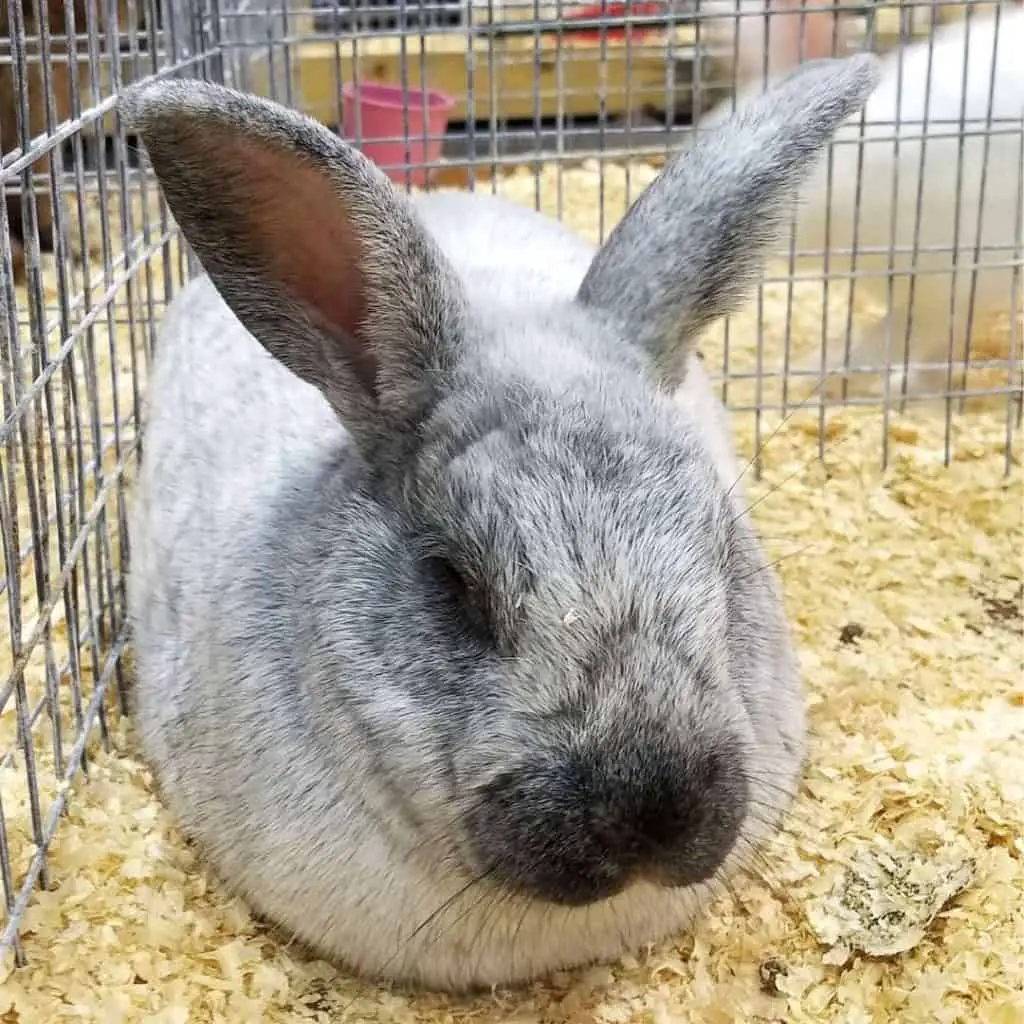
How To Adopt A Rabbit From An Individual
In many ways, adopting a rabbit from an individual is easier than adopting from a rabbit rescue, but you’re going to have to do more due diligence regarding the history and health of the rabbit.
The upside is that adopting a rabbit from an individual will probably be a lot less expensive than adopting from an animal shelter or buying a pet bunny.
If you are considering adopting a bunny from an individual, I encourage you to remember that you’re doing the previous owner a big favor by giving their bunny a new home. Start with the assumption that this is a free rabbit and you’re not going to pay an adoption fee or rehoming fee to the owner who can’t keep the bunny anymore.
I’d go a step further and see if the previous owner will give you their bunny’s rabbit gear (cage, feeder, waterer, litter box, toys, etc…) so their bunny can transition to their new home as easily as possible. If they won’t give it to you, then negotiate a very good price for the equipment they no longer have any use for.
However, the biggest challenge in adopting a bunny from an individual is just simply connecting with someone who needs to give up a pet rabbit.
How To Find A Rabbit For Adoption From An Individual
To find someone who has a pet bunny that they have to give up for adoption, you’re just going to have to let everyone you know that you’re open to bringing a pet rabbit into your home and life. I suggest you tell everyone you know and then share your pet bunny plans on social media.
You need to become very public with the idea that you’re open to taking a bunny into your home and life. Tell your friends and family what you’re thinking, and ask them to keep their eyes and ears open for the right opportunity.
I’d even post to your social media channels with something like, “I’m considering getting a pet rabbit, but I’d rather adopt a bunny that needs a new home instead of encouraging breeding of more bunnies. If you know someone who might have to give up their rabbit, please help us connect!”
You could even join local rabbit groups on Facebook. Just search for “Your City Rabbits” or “Your County Rabbits” or even “Your State Rabbits (of course you’re swapping out the “your _____” with real information) and join those groups. Within those communities, you might find someone who has a bunny that desperately needs a new home.
Questions To Ask Before Adopting A Rabbit From An Individual
- Why are you giving your rabbit up?
- How old is your rabbit?
- Is the rabbit spayed or neutered?
- Any health issues with the bunny?
- Who is your rabbit’s veterinarian?
- When is the last time you took the rabbit to the vet?
- Do you have childeren or other pets, and how does your rabbit get along with them?
- Are there any behavioural issues with this bunny?
- Is this an affecinate rabbit?
- Do you have rabbit gear that you can donate to your bunny’s new home?
Steps To Adopt A Bunny From An Individual
1. Connect With Someone Who Is Giving Up Their Bunny
This is probably not going to be a fast process, so just accept that and enjoy the journey. You’re not just looking for a pet bunny, you’re looking for a rabbit that needs to be rescued from a situation where they are no longer wanted. You’re not shopping for a pet rabbit, instead, you’re saving a rabbit.
Take your time and find a situation where you can do something amazing.
2. Interview The Current Owner
No one else is going to be checking out this bunny for hidden issues that you might not have the experience, time, or resources to deal with. You have to do your own due diligence and make sure you uncover any potential issues.
Use the list of questions above as a starting point, and dig deep. You owe it to the bunny and yourself.
3. Spend TIme With The Bunny
Before you bring a rabbit home to live with you for the rest of her life, you need to spend some time with that bunny and get to know each other.
The time might be limited, and rabbits take time to warm up to new people, but you need to learn about this bunny’s personality.
If the bunny is super scared with an unknown human in their home, don’t fret too much. Some rabbits are very cautious, but with time you’ll be able to achieve the same bond that the bunny has with its current owner.
If your bunny-time didn’t convince you that you and this bunny are a match, consider asking the current owner to take a video of their interaction when a stranger isn’t watching. When they send you this video, you’ll have a better feel for what your relationship with this bunny can be like.
4. Veterinarian Exam?
If you are not a rabbit pro, you should consider working with the current owner to have a veterinarian exam the bunny (at your expense) before you agree to take them into your life.
A vet can help you uncover any health issues which might be expensive or lead to a heartbreaking loss sooner than you expect. The vet can also help you verify the rabbit’s age (which is a little tricky). Rabbits live longer than many people think, but you owe it to yourself to know how long you can expect to have this bunny as part of your life.
5. Negotiate Rabbit Gear
Remember, you’re doing the current owner a huge favor by assuring that the pet they can no longer keep has a good forever home. You’re not paying them to save their bunny and that’s not a negotiation item.
What you can negotiate is the bunny’s rabbit gear. The current owner isn’t going to need all of the stuff that a rabbit needs if they no longer have a rabbit. Start by asking if the gear (cage, feeder, waterer, toys, litter box, a partial bag of food, etc..) come with the rabbit. Assume it belongs to the bunny and it goes to the new bunny’s home.
If you have the means, and the current owner has the need, you might decide to negotiate a price for all of the rabbit gear. That’s up to you, but there is no way that you should be paying more than 50% new price for used rabbit equipment, and I’d start a lot closer to 10%.
6. Bring Your Bunny Home
Now it’s time to bring your bunny home! Make sure you bring them into as quiet and peaceful an environment as possible so they have the time and space to get accustomed to their new home.
And depending on how the previous owner of the bunny is handling giving up their pet, you might even decide to send a video of the bunny safe and happy in their new home!
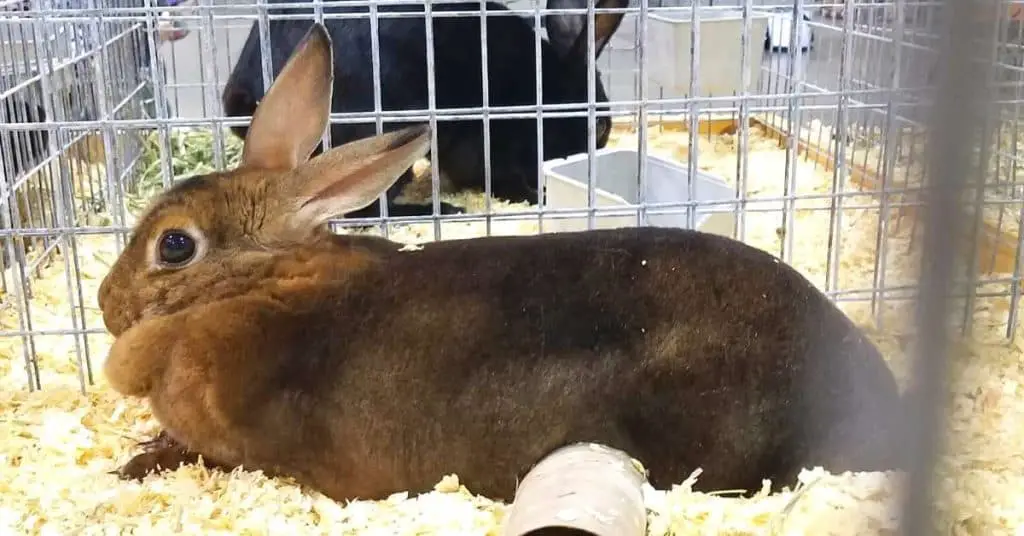
15 Rabbit Adoption Tips And Truths
Rabbit adoption is a big step. Experienced pet owners and new bunny owners will have a more seamless adoption experience if they are well prepared for the process.
I have asked thousands of my rabbit friends (on Facebook, and on the Rabbit Pros email list) for their best tips and tricks when it comes to adopting rabbits. I dug through all of the input and came up with the top 10 most helpful tricks for potential adopted rabbits parents to be.
1. Remember, Your Adopting, Not Shopping
You cannot approach adopting a bunny in the same way that you would approach buying a pet rabbit.
You’re not going to have dozens of rabbit breeders to choose from and you’re not going to be choosing your favorite bunny from a litter of bunnies.
Instead, you’re probably just going to find one rescue bunny at a time, and you have to choose if you’re taking that bunny home or waiting to find the next. It’s going to take time and it’s going to be a little emotionally taxing.
However, you are going to be saving a bunny, which is so emotionally rewarding in the end.
2. Decide Individual Or An Animal Rescue
It’s time to really think about if you want to adopt from an individual or find a bunny already in an animal rescue. I talked about the pros and cons of adopting a bunny in each way, but if you’re not sure, you might want to go read that section again.
You can look for your new bunny simultaneously in both places, but you need to be aware of the differences in the adoption process. Most people do better when they focus on one or the other when looking for a new rabbit.
3. Choose A Size, Not A Breed
When adopting a rabbit, you can’t be too picky. If you go in with the idea that you’re only going to adopt one specific breed of rabbit, you’re going to be looking for a long time.
However, you do need to be a little picky. You must decide what size of rabbit fits your home and your life before you start looking for a pet rabbit to adopt.
Rabbits come in countless shapes, and at least four sizes. There are giant rabbits that can grow to be the size of medium-sized dogs, large rabbits, standard rabbits, and small rabbits ( including dwarf rabbits) that can only fit the palm of your hand.
Giant and large rabbits take giant or large cages and exercise space, but they are usually more chill and much more hearty so that they aren’t as easily hurt by other pets or young children.
Smaller rabbit breeds tend to be skittish and nervous, if you have children who love to run around then small rabbit breeds might not be a good match for your family. However, small rabbits can live in significantly smaller rabbit hutches and need much smaller places to run and binky for exercise so they don’t become lazy and fat bunnies.
You must decide early on in the adoption process what size of rabbit fits into your life. Rabbits range from less than two pounds to up to 40 pounds (for the world record largest rabbit) and the space needed for that range of rabbits varies greatly.
Just decide early what size of rabbit fits your life, so you don’t make a spur-of-the-moment decision that might negatively impact your home.
4. Understand Your Responsiblities
Rabbits don’t take as much time as dogs, but they do take time and they live for routine.
You’ll be feeding your rabbit at least once a day, and cleaning their litter box at least twice a week.
Rabbits are also pretty timid when they are around people they don’t know, so you have to invest time to bond with your new bunny so you’ll have the affectionate pet bunny you dream of having as part of your life. This bonding time can double as exercise time, but it needs to be at least an hour a day.
Rabbits can be left alone for even a few days, but that should be the exception, not the norm.
5. Understand A Healthy Rabbit Diet
I’m not going to go into great detail here, but in general, a rabbit should eat mostly high-quality hay, supplemented with some fresh greens and just a small amount of rabbit pellets.
Don’t get sucked into the cheap rabbit feed with all kinds of colored junk food in the pellets. That kind of food will make your rabbit sick and fat.
I strongly encourage you to read our article about the ideal rabbit diet which was written by an actual veterinarian. If you start your bunny’s life with you with a good diet, it’s just going to make everyone’s life easier and better.
6. Decide Where Your Rabbit Will Live
Rabbits can live indoors or outdoors, though they live longer when they are indoor rabbits.
If you decide to keep your bunny outdoors (which we believe is a fine choice and we have kept outdoor pet rabbits at times), just make sure that you invest in a preditor secure outdoor rabbit hutch. Here is an article about the best outdoor rabbit hutch that we’ve ever found.
If your rabbit is going to live indoors as most pet bunnies do, you need to decide if they are going to have a rabbit hutch where they spend their nights and parts of their days or if you’re going to give them a whole room where they can live.
We have always had rabbit hutches because we just feel that our bunny is safer in an entirely ‘bunny safe’ environment. Rabbit rooms can be made entire bunny-safe, but it takes a lot of work. { Click Here to see our recommend Rabbit Hutches. >>> }
You might want to wait to buy a lot of rabbit gear until you find your adoption bunny. There’s a pretty good chance that if you get your bunny from an individual that you’ll get some rabbit gear for free or at least on the cheap.
7. Don’t Buy Food Yet
While we are very picky about the hay and pellets that we feed or bunnies { Click Here to see our recommended Rabbit Feed. >>> }, you shouldn’t stock up on hay or pellets until you get your bunny.
Rabbits like fresh food better than stale food, and you have no idea how long it is going to take you to find the perfect rescue bunny to bring home.
8. Introduce New Food Slowly
Rabbits have sensitive digestive systems and don’t always react well to a change in diet. Also, some rabbits are just picky eaters.
When you adopt a new bunny, do everything in your power to bring home a little of the pellets and maybe even the hay that they are used to eating. Then mix that familiar food with food that you are planning to feed them to get them transitioned to their new food.
In general, we feed a new rabbit their familiar food for at least two days or until they start eating well (some bunnies hold out for up to four days). Once they are eating well, we start mixing their familiar food with their new food on a half-and-half ratio until their old food is gone.
9. Expect Messes
Rabbits are very clean animals, but they can make messes. Sometimes bunnies quit using their litter box, especially when they change homes. This will pass, just be patient and kind.
10. Prepare Rabbit Toys
Aside from a spacious pen and good food, rabbits need chew toys. This will keep them mentally stimulated and lessen their boredom. Bored rabbits tend to result in chewing and biting so you do not want your rabbit to be chewing on the bars of their pens or even dangerous electrical wires.
Chews toys also help to keep rabbit teeth healthy so this is a must for all pet owners. You don’t have to spend a lot on toys, you can even make your own for free. { Click Here for our article about rabbit toys. >>> }
11. Make A Daily Schedule
Rabbits are creatures of routine. Disrupting their routines or not sticking to them at all will be stressful for your pet. This stress might become a reason why your pet rabbit finds it hard to bond with you.
A set schedule will help your bunny adapt faster to the new home and would easily be able to trust you because you give them consistent care.
Try to set up a time for the important daily rabbit matters such as feeding and exercise. A schedule is also not just helpful for your rabbit, an organized schedule for a pet owner also results in increased productivity while lowering anxiety.
12. Schedule An Initial Vet Visit
You might already have a go-to vet or your rescue might bundle a free vet visit with the adoption fees. Either way, you must schedule a vet visit and make sure to attend it.
Vets will be able to assess the health of your rabbit after you have taken it home. This is especially important if you have rabbits that live with other pets.
Some diseases can be passed on from animal to animal, it is always better to prevent or diagnose this early rather than go through the costly process of cure.
13. Schedule Neutering Or Spaying
If your rabbit isn’t already spayed or neutered you should consider getting it done. { Click Here for an article about the merits of spaying and neutering rabbits. >>> }.
Rember that some animal rescues also bundle spaying or neutering with the adoption fee. But if they do not offer this then it is your responsibility to schedule your rabbit for a neuter/spay surgery.
Rabbits generally can be neutered from 4 to 6 months of age. You must choose a vet that you trust for this procedure although this surgery is generally safe for pets.
14. Make Bunny Integration Plan
If you have other pets you must have a plan on how to integrate them. I have an entire article about raising chickens and rabbits together so that might be helpful. However, if you have pets such as dogs and cats, then it is even more important to make sure that they are integrated separately.
A pen will be beneficial for this as this will create a barrier between your rabbit and your other pets. It will allow your pets to spend time in a room together without being too close for comfort. Eventually, when you are confident enough that they can spend time in a room together then you can remove the pen.
Our family keeps a big dog kennel just for situations like this. We normally put the bunny in the dog kennel because it’s large enough for the bunny to be able to stay safely in the middle while you sit outside with the dog or cat as they sniff their new housemate. { Click Here to see the one we have on Amazon. >>>}
I don’t suggest holding a rabbit when introducing it to larger animals. Rabbits can kick harder than you think, and having the rabbit get off of your lap could lead to a very unfortunate series of events.
However, any playtime with bigger pets and rabbits should always be supervised to avoid unnecessary injuries.
15. Spend time with your rabbit
This is the most important part that an owner needs to know. Having a pet is all about companionship and love.
You may provide an entire room for your rabbit to play in, fill its box with hay and pellets, or buy him a hundred toys but a rabbit will never be happy if it does not bond with its owners.
Rabbits are social animals and they thrive better as part of a family. This means cuddle times, head pets, and quiet companionship. Note that largely ignoring your rabbits is also in a sense, abuse.
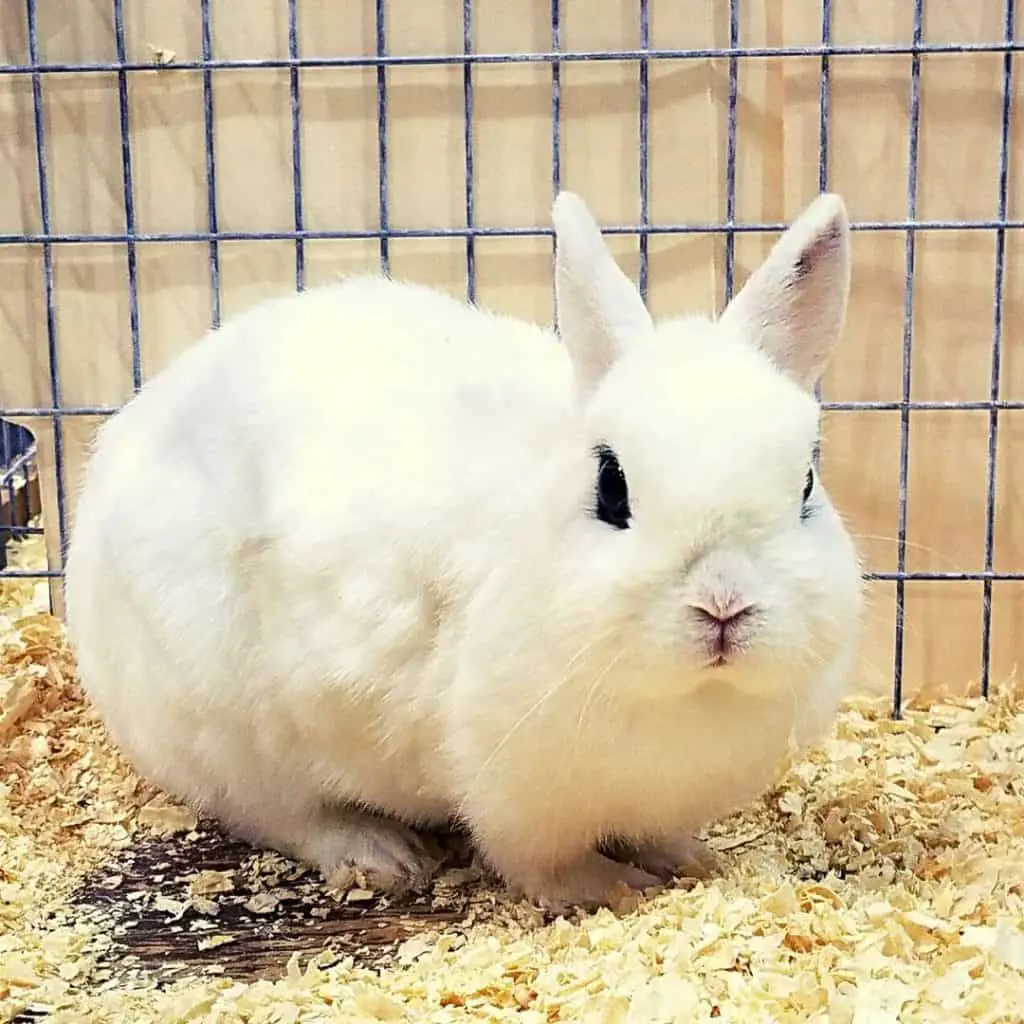
Best Rabbit Adoption Websites And Rescues?
There are tons of rabbit adoption and rescues scattered around the United States. I will be listing some of the most prominent ones in the table below:
| Organization Name | State | Website |
|---|---|---|
| Magic Happens Rabbit Rescue | LA | http://www.magichappensrescue.com/Contact.aspx |
| Indiana House Rabbit Society | IN | https://www.indianahrs.org/ |
| The Rabbit Haven | CA | https://therabbithaven.org/ |
| House Rabbit Society | Nationwide | https://rabbit.org/house-rabbit-society-contacts/ |
| Long Island Rabbit Rescue Group | NY | https://www.longislandrabbitrescue.org/ |
| Best Friends | Nation Wide | https://bestfriends.org/ |
| Save a Bunny | CA | http://www.saveabunny.org/adopt |
| Ohio House Rabbit Rescue | OH | https://www.ohiohouserabbitrescue.org/ |
| MIDWEST RABBIT RESCUE & RE-HOME | MI | https://www.rabbitrr.org/ |
| Luv-N-Bunns | PH | https://www.luvnbunns.org/ |
This article is not to convince anyone that adopting is a better choice than getting from a breeder.
People have their reasons for choosing adoptions and some have their reasons for buying from breeders.
Both the valid choices, what is important is that at the end of the day we all provide homes for rabbits and we keep them off the streets.
How was your pet rabbit adoption experience? Comment and share your stories down below!
~Stacey
